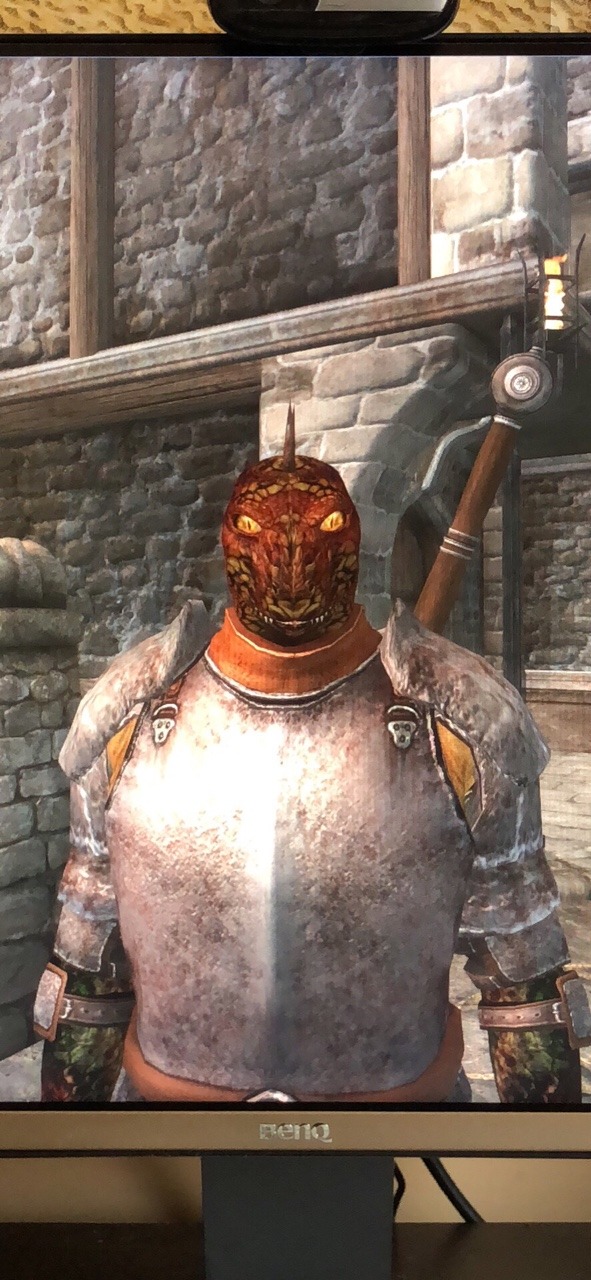No Greek God Is Inherently And Wholly “good” Or “bad” Because They Were All Flawed And Imperfect
no greek god is inherently and wholly “good” or “bad” because they were all flawed and imperfect in some way with different facets of personality and character to serve as a reflection of society and human nature itself
More Posts from Tig-old-biddie-boi and Others
Yay, unsolicited advice time! Or, not really advice, more like miscellaneous tips and tricks, because if there's one thing eight years of martial arts has equipped me to write, it's fight scenes.
.
Fun things to add to a fight scene (hand to hand edition)
It's not uncommon for two people to kick at the same time and smack their shins together, or for one person to block a kick with their shin. This is called a shin lock and it HURTS like a BITCH. You can be limping for the rest of the fight if you do it hard enough.
If your character is mean and short, they can block kicks with the tip of their elbow, which hurts the other guy a lot more and them a lot less
Headbutts are a quick way to give yourself a concussion
If a character has had many concussions, they will be easier to knock out. This is called glass jaw.
Bad places to get hit that aren't the groin: solar plexus, liver, back of the head, side of the thigh (a lot of leg kicks aim for this because if it connects, your opponent will be limping)
Give your character a fighting style. It helps establish their personality and physicality. Are they a grappler? Do they prefer kicks or fighting up close? How well trained are they?
Your scalp bleeds a lot and this can get in your eyes, blinding you
If you get hit in the nose, your eyes water
Adrenaline's a hell of a drug. Most of the time, you're not going to know how badly you've been hurt until after the fact
Even with good technique, it's really easy to break toes and fingers
Blocking hurts, dodging doesn't
.
Just thought these might be useful! If you want a more comprehensive guide or a weapons edition, feel free to ask. If you want, write how your characters fight in the comments!
Have a bitchin day <3

Shuri, knowing damn well Antman is bout’ to shrink directly next to Peter: GIMME YOUR FUCKIN MONEY
Peter grabs Antman and yeets his little ol’ ass into a wall
***
Thor, launches his battle axe into the ceiling
Loki, technically being ‘17’ (argument on that linked here): THIS IS WHY MOM DIDN’T FUCKING LOVE YOU
***
Peter puts on Only by Nicki Minaj
Steve, even though he still has no idea what a 'vine’ or a 'meme’ (pronounced Mehmeh) is, naturally reacting like: No. No! Turn that off! NO!

there’s an ariana stan on twitter who got her phone taken off her and is accessing it thru any device she can find lmaoooo
Good Traits Gone Bad
Exploring good traits gone bad in a novel can add depth and complexity to your characters. Here are a few examples of good traits that can take a negative turn:
1. Empathy turning into manipulation: A character with a strong sense of empathy may use it to manipulate others' emotions and gain an advantage.
2. Confidence becoming arrogance: Excessive confidence can lead to arrogance, where a character belittles others and dismisses their opinions.
3. Ambition turning into obsession: A character's ambition can transform into an unhealthy obsession, causing them to prioritize success at any cost, including sacrificing relationships and moral values.
4. Loyalty becoming blind devotion: Initially loyal, a character may become blindly devoted to a cause or person, disregarding their own well-being and critical thinking.
5. Courage turning into recklessness: A character's courage can morph into reckless behavior, endangering themselves and others due to an overestimation of their abilities.
6. Determination becoming stubbornness: Excessive determination can lead to stubbornness, where a character refuses to consider alternative perspectives or change their course of action, even when it's detrimental.
7. Optimism becoming naivety: Unwavering optimism can transform into naivety, causing a character to overlook dangers or be easily deceived.
8. Protectiveness turning into possessiveness: A character's protective nature can evolve into possessiveness, where they become overly controlling and jealous in relationships.
9. Altruism becoming self-neglect: A character's selflessness may lead to neglecting their own needs and well-being, to the point of self-sacrifice and burnout.
10. Honesty becoming brutal bluntness: A character's commitment to honesty can turn into brutal bluntness, hurting others with harsh and tactless remarks.
These examples demonstrate how even admirable traits can have negative consequences when taken to extremes or used improperly. By exploring the complexities of these traits, you can create compelling and multi-dimensional characters in your novel.
Happy writing!
Character Flaws and Their Meanings
Impulsiveness : Acts on instinct without careful planning. Perfectionism : Sets unrealistically high standards, leading to self-criticism. Indecisiveness : Struggles to commit to decisions or choose a path. Arrogance : Overestimates one’s abilities and dismisses others. Pessimism : Habitually expects negative outcomes in most situations. Cynicism : Distrusts the motives and sincerity of others. Overconfidence : Places excessive faith in one’s skills, often underestimating risks. Stubbornness : Resists change and refuses to adapt to new ideas. Jealousy : Feels envious of others' success or possessions. Insecurity : Experiences frequent self-doubt and a lack of confidence. Procrastination : Tends to delay tasks, often leading to missed opportunities. Passivity : Avoids taking initiative and relies on others to act. Aggressiveness : Responds with hostility or force rather than reason. Selfishness : Prioritizes personal gain over the welfare of others. Fragility : Is overly sensitive to criticism and easily discouraged. Egotism : Constantly focuses on oneself and one’s own importance. Defensiveness : Quickly rejects or rationalizes away critique or new information. Manipulativeness : Exploits others to fulfill personal needs or desires. Recklessness : Shows a careless disregard for potential risks or consequences. Resentfulness : Holds lingering bitterness and grudges over perceived wrongs. Distractibility : Finds it hard to maintain focus amid competing interests. Impatience : Lacks the willingness to wait, often spoiling opportunities to learn. Perfunctory : Performs actions in a mechanical, uninspired manner. Self-Doubt : Consistently questions personal abilities and decisions. Arbitraryness : Makes decisions based on whim rather than reason or evidence. Rigidity : Is inflexible and unwilling to consider alternative viewpoints. Gullibility : Trusts too easily, often leading to being misled or deceived. Obsession : Becomes excessively fixated on particular ideas or details. Aloofness : Maintains emotional distance, appearing detached or indifferent. Intolerance : Refuses to accept differing perspectives or lifestyles.
Writing Advice for Brainstorming
Mix genres and time periods: Experiment by combining elements from different eras or genres to create unique settings and narratives.
Use "what if" scenarios: Pose unexpected questions (e.g., What if time travel operated on emotions rather than mechanics?) to spark novel ideas.
Draw from diverse mediums: Engage with art, music, or even scientific papers to inspire unexpected plot twists.
Embrace absurdity: Let illogical or surreal ideas guide you; sometimes the wildest thoughts lead to compelling stories.
Reverse clichés: Identify common tropes in your favorite genres and deliberately invert them to create fresh perspectives.
Incorporate personal anomalies: Transform your idiosyncrasies and personal struggles into rich, multi-dimensional characters.
Use mind-mapping: Visually plot your ideas in a freeform way to uncover hidden connections between disparate elements.
How to Plot A Complex Novel in One Day (It WILL take all day)
Now first, I have to say, that the plot you’re able to come up with in one day is not going to be without its flaws, but coming up with it all at once, the entire story unfolds right in front of you and makes you want to keep going with it. So, where to begin?
What is your premise and basic plot? Pick your plot. I recommend just pulling one from this list. No plots are “original” so making yours interesting and complicated will easily distract from that fact, that and interesting characters. Characters will be something for you to work on another day, because this is plotting day. You’ll want the main plot to be fairly straight forward, because a confusing main plot will doom you if you want subplots.
Decide who the characters will be. They don’t have to have names at this point. You don’t even need to know who they are other than why they have to be in the story. The more characters there are the more complicated the plot will be. If you intend to have more than one subplot, then you’ll want more characters. Multiple interconnected subplots will give the illusion that the story is very complicated and will give the reader a lot of different things to look at at all times. It also gives you the chance to develop many side characters. The plot I worked out yesterday had 13 characters, all were necessary. Decide their “roles” don’t bother with much else. This seems shallow, but this is plot. Plot is shallow.
Now, decide what drives each character. Why specifically are they in this story? You can make this up. You don’t even know these characters yet. Just so long as everyone has their own motivations, you’re in the clear.
What aren’t these characters giving away right off the bat? Give them a secret! It doesn’t have to be something that they are actively lying about or trying to hide, just find something that perhaps ties them into the plot or subplot. This is a moment to dig into subplot. This does not need to be at all connected to their drive to be present in the story. Decide who is in love with who, what did this person do in the 70’s that’s coming back to bite them today, and what continues to haunt what-his-face to this very day. This is where you start to see the characters take shape. Don’t worry much about who they are or what they look like, just focus on what they’re doing to the story.
What is going to change these characters? Now this will take some thinking. Everyone wants at least a few of the characters to come out changed by the end of the story, so think, how will they be different as a result of the plot/subplot? It might not be plot that changes them, but if you have a lot of characters, a few changes that are worked into the bones of the plot might help you.
Now list out the major events of the novel with subplot in chronological order. This will be your timeline. Especially list the historical things that you want to exist in backstory. List everything you can think of. Think about where the story is going. At this point, you likely haven’t focused too much on the main plot, yeah, it’s there, but now really focus on the rising actions, how this main plot builds its conflict, then the climactic moment. Make sure you get all of that in there. This might take a few hours.
Decide where to start writing. This part will take a LOT of thinking. It’s hard! But now that you’ve got the timeline, pick an interesting point to begin at. Something with action. Something relevant. Preferably not at the beginning of your timeline - you want to have huge reveals later on where these important things that happened prior are exposed. This is the point where you think about what information should come out when. This will be a revision of your last list, except instead of being chronological, it exists to build tension.
Once you’ve gotten the second list done, you’ve got a plot. Does it need work? Probably. But with that said, at this point you probably have no idea who half your characters are. Save that for tomorrow, that too will be a lot of work.
After you’ve plotted the loose structure of your novel from this, see my next post to work on character!
remember, before you post, think SMART
Start discourse
Make up arguments
Ad hominem
Reading the post is for losers
Talk without thinking


you telling me americans don’t have these tasty little morsels?

me @ demons: it’s free real estate
-
 skidaddle-skid00dle reblogged this · 1 month ago
skidaddle-skid00dle reblogged this · 1 month ago -
 possibly-god reblogged this · 1 month ago
possibly-god reblogged this · 1 month ago -
 possibly-god liked this · 1 month ago
possibly-god liked this · 1 month ago -
 pyroclasts liked this · 1 month ago
pyroclasts liked this · 1 month ago -
 featsofdexterity liked this · 1 month ago
featsofdexterity liked this · 1 month ago -
 featsofdexterity reblogged this · 1 month ago
featsofdexterity reblogged this · 1 month ago -
 endlesslyanya reblogged this · 1 month ago
endlesslyanya reblogged this · 1 month ago -
 applexxcider liked this · 1 month ago
applexxcider liked this · 1 month ago -
 t-valentines liked this · 2 months ago
t-valentines liked this · 2 months ago -
 startrekbexxx liked this · 2 months ago
startrekbexxx liked this · 2 months ago -
 chrissieshauntedbones reblogged this · 2 months ago
chrissieshauntedbones reblogged this · 2 months ago -
 dannahthornton reblogged this · 2 months ago
dannahthornton reblogged this · 2 months ago -
 samwisegamge reblogged this · 3 months ago
samwisegamge reblogged this · 3 months ago -
 paranpanpan reblogged this · 3 months ago
paranpanpan reblogged this · 3 months ago -
 stornbreaker reblogged this · 3 months ago
stornbreaker reblogged this · 3 months ago -
 sparky2020sworld liked this · 3 months ago
sparky2020sworld liked this · 3 months ago -
 thebadluck reblogged this · 3 months ago
thebadluck reblogged this · 3 months ago -
 fisbiscwits reblogged this · 3 months ago
fisbiscwits reblogged this · 3 months ago -
 bluespiritfire liked this · 3 months ago
bluespiritfire liked this · 3 months ago -
 chrissieshauntedbones liked this · 3 months ago
chrissieshauntedbones liked this · 3 months ago -
 leilaorgana liked this · 3 months ago
leilaorgana liked this · 3 months ago -
 undeaduserbase reblogged this · 3 months ago
undeaduserbase reblogged this · 3 months ago -
 buckynatism reblogged this · 3 months ago
buckynatism reblogged this · 3 months ago -
 village-skeptic liked this · 3 months ago
village-skeptic liked this · 3 months ago -
 too-antigonish liked this · 3 months ago
too-antigonish liked this · 3 months ago -
 scrumptiousperfectionwizard reblogged this · 3 months ago
scrumptiousperfectionwizard reblogged this · 3 months ago -
 scrumptiousperfectionwizard liked this · 3 months ago
scrumptiousperfectionwizard liked this · 3 months ago -
 elstabler reblogged this · 3 months ago
elstabler reblogged this · 3 months ago -
 reorientingtothexdaylight reblogged this · 3 months ago
reorientingtothexdaylight reblogged this · 3 months ago -
 reorientingtothexdaylight liked this · 3 months ago
reorientingtothexdaylight liked this · 3 months ago -
 reallyundistinguishedbitch reblogged this · 3 months ago
reallyundistinguishedbitch reblogged this · 3 months ago -
 magnificentgardenerdinosaur reblogged this · 3 months ago
magnificentgardenerdinosaur reblogged this · 3 months ago -
 magnificentgardenerdinosaur liked this · 3 months ago
magnificentgardenerdinosaur liked this · 3 months ago -
 caitlyn221b reblogged this · 3 months ago
caitlyn221b reblogged this · 3 months ago -
 caitlyn221b liked this · 3 months ago
caitlyn221b liked this · 3 months ago -
 boogandy liked this · 3 months ago
boogandy liked this · 3 months ago -
 dragonslover98 reblogged this · 3 months ago
dragonslover98 reblogged this · 3 months ago -
 dragonslover98 liked this · 3 months ago
dragonslover98 liked this · 3 months ago -
 rafflesbunny liked this · 3 months ago
rafflesbunny liked this · 3 months ago -
 wildwildtarget reblogged this · 3 months ago
wildwildtarget reblogged this · 3 months ago -
 wildwildtarget liked this · 3 months ago
wildwildtarget liked this · 3 months ago -
 vettels-bees reblogged this · 3 months ago
vettels-bees reblogged this · 3 months ago -
 wayfaringellie reblogged this · 3 months ago
wayfaringellie reblogged this · 3 months ago -
 marissa-roo1 liked this · 3 months ago
marissa-roo1 liked this · 3 months ago -
 lovelydrusilla liked this · 3 months ago
lovelydrusilla liked this · 3 months ago -
 obsidiannbutterfly liked this · 3 months ago
obsidiannbutterfly liked this · 3 months ago -
 natedevereaux liked this · 3 months ago
natedevereaux liked this · 3 months ago -
 everlovingdeer liked this · 3 months ago
everlovingdeer liked this · 3 months ago -
 phoenixes-and-wizards liked this · 3 months ago
phoenixes-and-wizards liked this · 3 months ago -
 unapologetichyperfixation liked this · 3 months ago
unapologetichyperfixation liked this · 3 months ago
